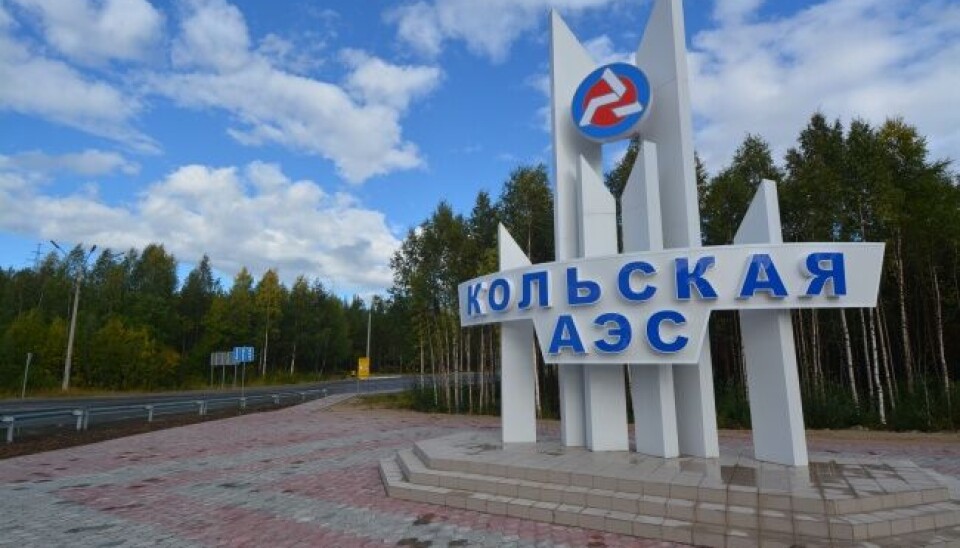
Kola nuclear power plant turns 50. That is not necessarily something to celebrate
The first VVER-440/230 reactor at Kola Nuclear Power Plant was connected to the electricity grid on June 29, 1973. Western sanctions do not trouble the safety as most spare parts are made in Russia, says environmental watchdog Bellona.
The Kola plant became the world’s first to produce nuclear-generated electricity north of the Arctic Circle. Construction of the first reactor started in 1969 and four years later it was connected to the grid. A total of four reactors are today in operation at the power plant.
The two first are of the VVER-440/230 type, the Soviet Union’s first generation civilian water-cooled reactors. The last two are the second generation of the VVER-440/213 type.
Later, the USSR designed the larger VVER-1000 reactors that today are in operation at several nuclear power plants, including the Zaporizhzhia in the war zone in Ukraine.
A few years after the breakup of the Soviet Union, the International Atomic Energy Agency (IAEA) initiated a full safety evaluation of the old VVER-400/230 reactors, at that time in operation in Russia, Bulgaria and Czechoslovakia. A plant with similar reactors Greifswald in the former East Germany was already shut down for safety concerns.
Safety help
The IAEA report published in 1992 identified some 100 safety issues and pointed out a ranking of needed improvements. In the 90s, safety problems at Kola nuclear power plants caused headlines not only in Russia, but also in neighboring Scandinavian countries.
Norway granted the power plant both cash for improving the safety, but also practical equipment like external generators to ensure cooling in case of loss of power to the inbuilt cooling system. Foreign Minister of Norway at the time, Bjørn Tore Godal, however, ensured the Parliament in Oslo in 1995 that all Norwegian technical assistance to Kola nuclear power plant should not «contribute to prolong the lifetime of the reactors, only to improve the safety.»
Wartime
For wartime Russia, most of the internationally focused safety work at Kola nuclear power plant has come to an end.
“There are no more foreign donors helping Russia on nuclear safety in the northwest,” says Dmitry Gorchakov, a nuclear advisor with the Bellona Environmental Transparency Center in Vilnius. His group had to leave Russia for Lithuania after the full-scale war started. This spring, authorities in Moscow declared Bellona undesirable, meaning no one inside Russia can any longer work for, or stay in contact with, the environmentalists.
For Dmitry Gorchakov and his colleagues, that limits their access to reliable information.
“During the war, many official resources, government resources, are closed, they don’t share all information like they did before. We have to find new sources, new tools,” he says.
“Liars”
How Western sanctions are impacting radiation safety works on the Kola Peninsula is difficult to assess, according to Bellona.
“We don’t talk with officials. They are lying. About how they manage with sanctions, how they will work in different countries,” Gorchakov says. He, however, thinks the state nuclear corporation Rosatom easily can maneuver operations based on a domestic supply chain.
“Not much depends on foreign spare parts, uranium products. They make most inside the country,” Dmitry Gorchakov tells. Before starting to work for Bellona, Gorchakov worked for years for the nuclear industry inside Russia, often in tight contact with state officials.

He believes many of the safety programs initiated during decades of international cooperation now are put on hold.
“Some safety programs will be slowed down, while others will be canceled. They will maybe put it on pause,” he says.
“I think some Russian officials hope the war will stop sooner or later. But now they spend a lot of money on the war, so environmental problems are not a priority.”
“This could be dangerous, but we need to analyze it more,” Gorchakov says.
Operation until 2033
Meanwhile, reactor No. 1 at Kola NPP, originally built for a 30-years lifetime, celebrates its 50th anniversary.
Authorities granted one license prolongation after the other. In 2018, Rostechnadzor, the federal supervisory body for environmental, industrial and nuclear services, issued the license for the operation of Kola nuclear power plant’s unit No. 1 until July 6, 2033, the Barents Observer reported. The following year, unit No. 2 was granted an additional 15-years operation licence.
The power plant’s share of the electricity production in Murmansk region is about 60%. Most of the other 40% is generated by hydropower. According to Rosatom, the power plant has from start produced 463 billion kWh of electricity to the energy system in Russia’s northwest regions.
Celebrating its 50 years anniversary, the plant arranged a large gala with state officials, the regional governor and other guests.
Fewer incidents, or?
In recent years, safety apparently has improved at the nuclear power plant located a 3-hours drive south of Murmansk. After Russia launched its full-scale war on Ukraine and put an end to all independent watchdogs and media, only one incident is reported from Kola NPP.
It was unit No. 3 that on May 21 this year experienced an automatic emergency shutdown. First, Rosatom wouldn’t say what caused the trouble, but two days later the company admitted that it all was due to a faulty sensor at the power control system in turbogenerator No. 6.
The backup emergency external power system at the plant aimed to keep cooling water running in case of power fallouts, is supposed to come from two diesel generators, both delivered by Norway in the 90ties. Today, Norway has ended all practical cooperation on nuclear safety with Russia, including possible deliveries of spare parts to the Kola NPP’s emergency generators.
By 2035, a new nuclear power plant will be built a few kilometers from today’s location.















